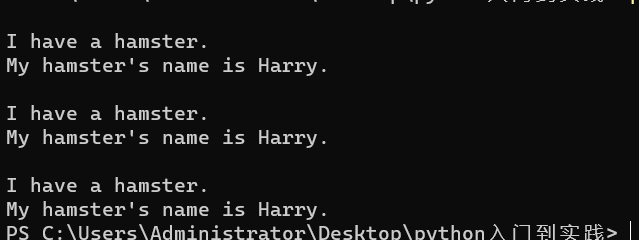python基础之函数
1|0定义函数
2|0函数传参
3|0关键字参数
4|0默认参数
5|0函数返回值
6|0函数结合循环
7|0函数结合列表
8|0任意数量的参数
9|0不定长参数
10|0匿名函数
变量名= lambda参数:表达式
◆参数:可选,通常以逗号分隔的变量表达式形式,也就是位置参数
◆表达式:不能包含循环、return,可以包含if...else...
相比函数,lamba表达式具有以下2 个优势:
◆对于单行函数,使用lambda 表达式可以省去定义函数的过程,让代码更加简洁;
◆对于不需要多次复用的函数,使用lambda 表达式可以在用完之后立即释放,提高程序执行的性能。
11|0递归函数
一个函数调用其本身,则称它为递归函数。递归函数必须是不断的递归调用函数本身直到达到某一个条件然后返回一个结果。
{{uploading-image-290106.png(uploading...)}}
12|0高阶函数
函数对象也可以作为参数传递给函数,还可以作为函数的返回值。参数为函数对象的函数或返回函数对象的函数称为高阶函数,即函数的函数
12|1map函数
map() 函数的基本语法格式:map(function, iterable)其中,function参数表示要传入一个函数,可以是内置函数、自定义函数或者lambda 匿名函数;iterable表示一个或多个可迭代对象,可以是列表、字符串等。
map() 函数的功能是对可迭代对象中的每个元素,都调用指定的函数,并返回一个map 对象,不是list。
12|2filter()函数
filter()函数的基本语法格式:filter(function, iterable)funcition参数表示要传入一个函数,iterable表示一个可迭代对象。
filter() 函数的功能是对iterable中的每个元素,都使用function 函数判断,并返回True 或者False,最后将返回True 的元素组成一个新的可遍历的集合。
12|3reduce() 函数
通常用来对一个集合做一些累积操作,基本语法格式为:reduce(function, iterable)其中,function规定必须是一个包含2 个参数的函数;iterable表示可迭代对象。注意:由于reduce() 函数在Python 3.x 中已经被移除,放入了functools模块,因此在使用该函数之前,需先导入functools模块,需要引用:from functools import reduce
__EOF__

本文链接:https://www.cnblogs.com/harry66/p/13765926.html
关于博主:评论和私信会在第一时间回复。或者直接私信我。
版权声明:本博客所有文章除特别声明外,均采用 BY-NC-SA 许可协议。转载请注明出处!
声援博主:如果您觉得文章对您有帮助,可以点击文章右下角【推荐】一下。您的鼓励是博主的最大动力!
本文来自博客园,作者:Harry_666,转载请注明原文链接:https://www.cnblogs.com/harry66/p/13765926.html
















【推荐】国内首个AI IDE,深度理解中文开发场景,立即下载体验Trae
【推荐】编程新体验,更懂你的AI,立即体验豆包MarsCode编程助手
【推荐】抖音旗下AI助手豆包,你的智能百科全书,全免费不限次数
【推荐】轻量又高性能的 SSH 工具 IShell:AI 加持,快人一步
· AI与.NET技术实操系列(二):开始使用ML.NET
· 记一次.NET内存居高不下排查解决与启示
· 探究高空视频全景AR技术的实现原理
· 理解Rust引用及其生命周期标识(上)
· 浏览器原生「磁吸」效果!Anchor Positioning 锚点定位神器解析
· DeepSeek 开源周回顾「GitHub 热点速览」
· 物流快递公司核心技术能力-地址解析分单基础技术分享
· .NET 10首个预览版发布:重大改进与新特性概览!
· AI与.NET技术实操系列(二):开始使用ML.NET
· 单线程的Redis速度为什么快?